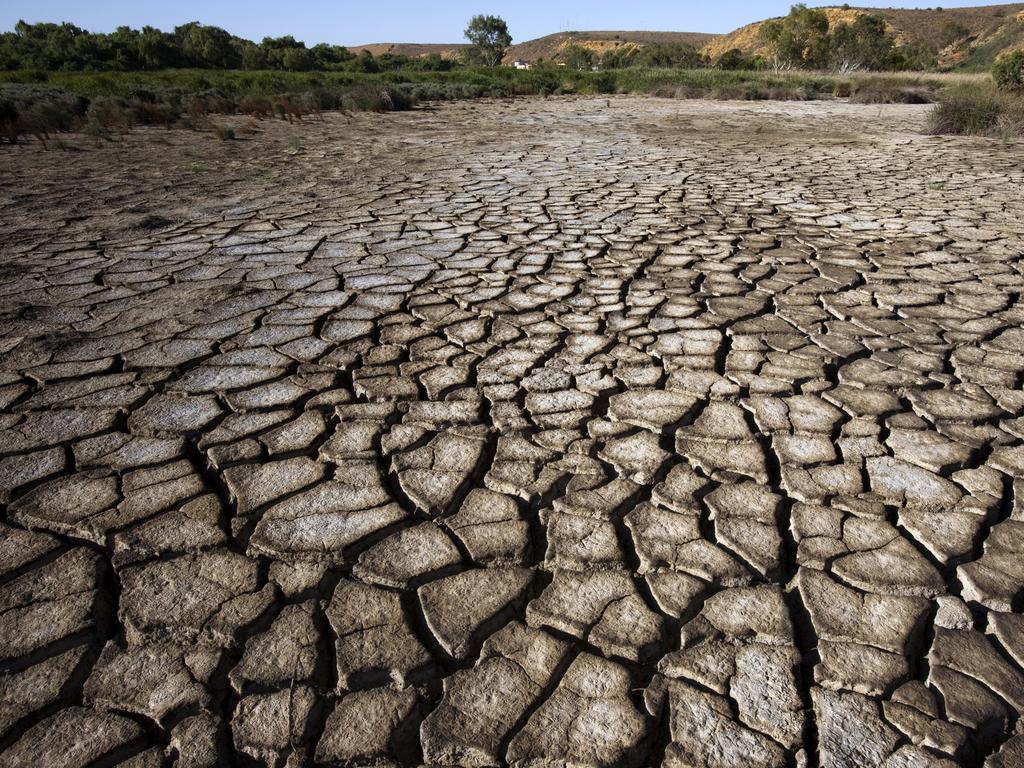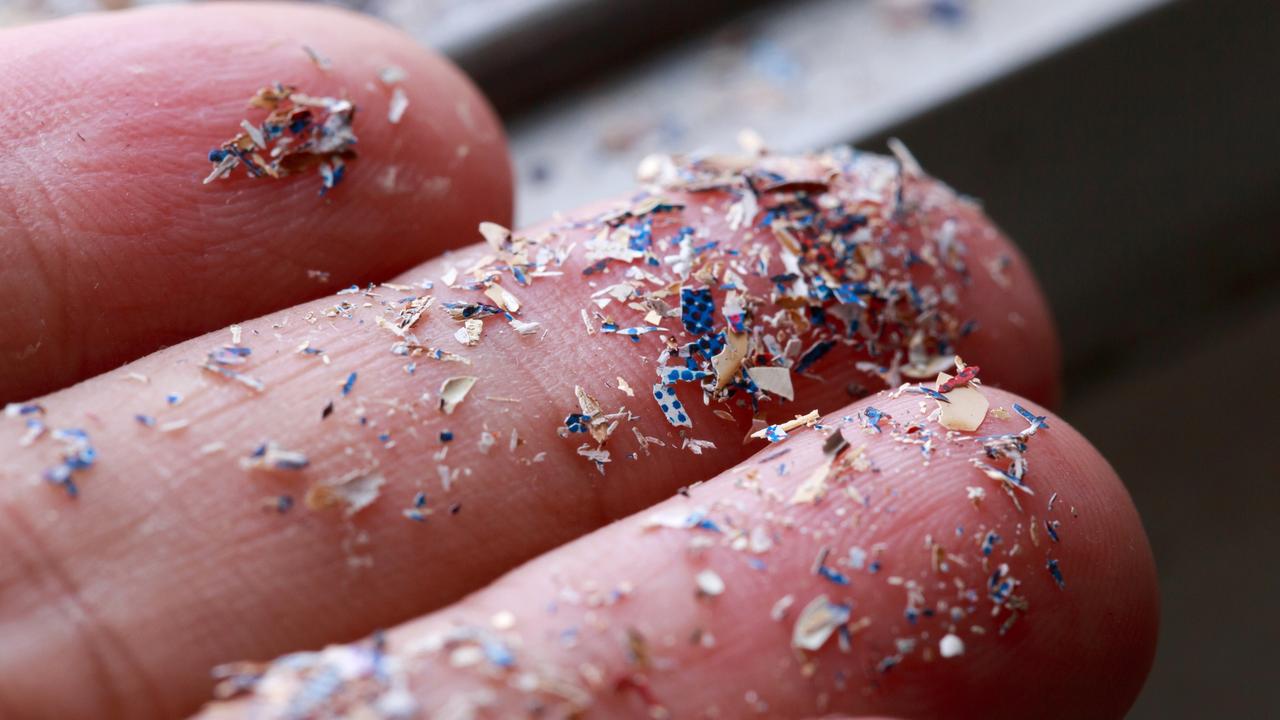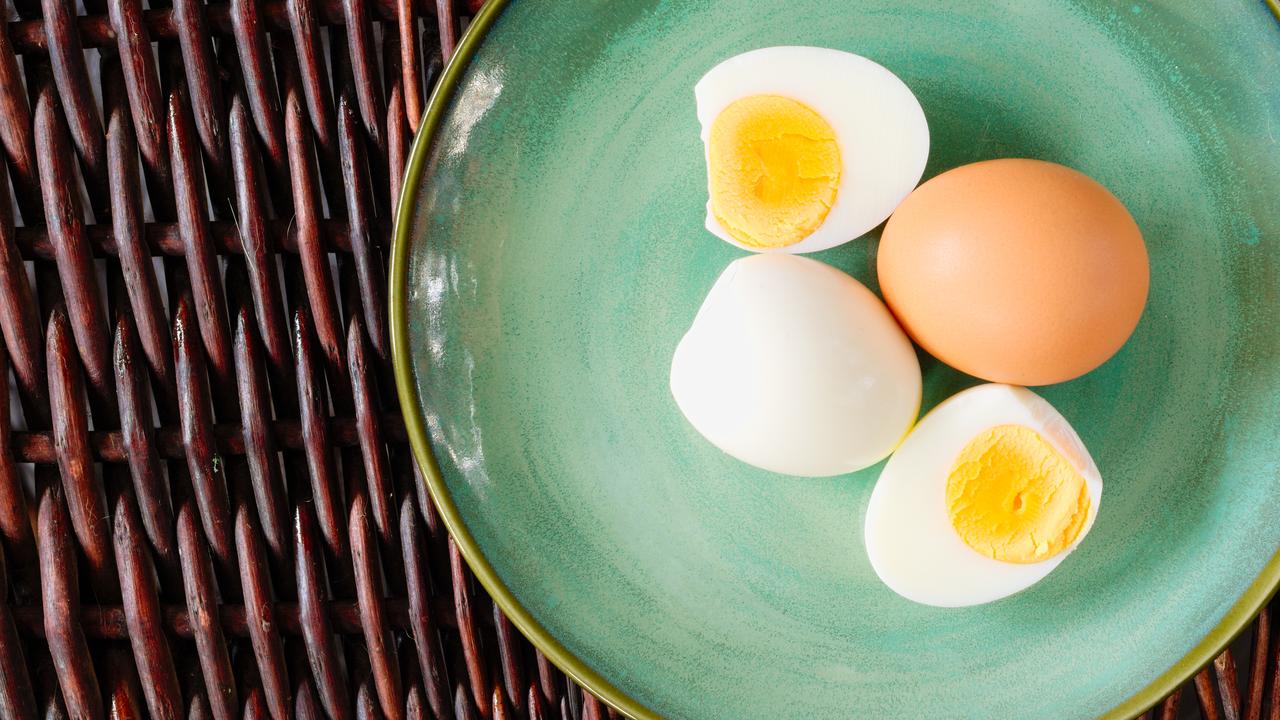How’s the water quality? Check the app
The national science agency’s AquaWatch mission will deliver groundbreaking earth-to-space monitoring of water quality.
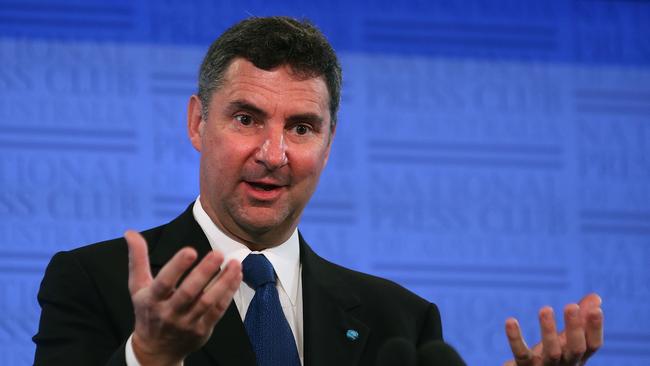
The national science agency wants to take the guesswork out of hitting the beach or running a multi-billion-dollar aquaculture concern through groundbreaking earth-to-space monitoring of water quality.
CSIRO’s AquaWatch mission would spread the word about toxic algal blooms, sea pollution and impending mass fish kills in the same way the weather bureau issues storm warnings.
A network of sensors linked to orbiting satellites would constantly check water quality under the $80m-plus scheme, to be unveiled on Wednesday at a United Nations conference in New York.
Popular recreation sites on rivers and the coast could be screened while primary producers and water-reliant industries are fed safety data around the clock.
“Imagine taking your family to the local swimming spot and being able to open your phone and check the water quality before they dive in,” said CSIRO chief executive Larry Marshall. “Or better yet, getting a forecast for the water quality days before you planned your family day out.
“Now imagine the impact of this if you were an environment manager, able to receive advance warning of the oxygen-depleted blackwater events often responsible for mass fish kills. Or an aquaculture farmer able to plan ahead for an impending algal bloom.
“Overseas, in places where people still face the risk of unsafe water for basic needs like drinking and sanitation, such a service could be a game-changer.”
In a claimed world-first, data would bounce between the satellites and ground monitors to keep tabs on water quality and provide notice of adverse events such as the massive fish die-out that has choked waterways at Menindee in outback NSW, a key catchment of the Darling-Murray river system.
Hyperspectral imaging from space would pick up signs of trouble and then be augmented with on-site readings, Dr Marshall said. The data would be crunched at a central hub to provide projections of water quality for days ahead, just like a weather forecast.
“The ingenuity behind AquaWatch is it integrates earth observation with other science capabilities like in-situ sensing, ecosystem modelling, engineering, data science and artificial intelligence,” Dr Marshall said.
Program lead Alex Held said nearly a third of the world’s population was at risk from unsafe water.
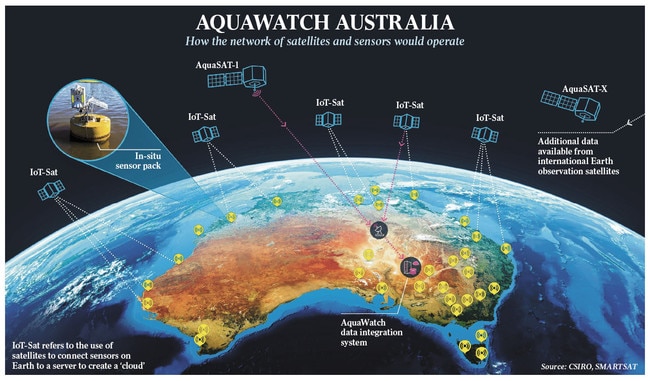
In addition to the health and environmental threats posed by blue-green alga blooms, water quality in Australia was degraded by cyclones, floods and bushfires, as well as agricultural runoff and coastal development. “We’re aiming to provide forecasts of water quality two to three days into the future,” Dr Held said. “It will be a sort of weather forecast for water, like the weather app on your phone. By 2030, our aim is that all Australians will have access to real-time information about the water quality at their favourite spots, as well as an early warning system for any potential water quality issues.”
The program would have the capacity to monitor waterholes, bays, beaches, coastal wetlands, irrigation farming, aquaculture and threatened mangrove forests. Water temperature, salinity and sedimentation levels on the Great Barrier Reef could be tracked to provide advance notice of coral bleaching, Dr Marshall said.
“Even though we can now see sedimentary runoff onto the reef, we’ll be able to see it a lot better,” he said. “Sharing that data in real time through an app, for example, with the farmers who fertilise and work the land adjacent to the reef … will make it a lot easier for them to understand how to change their practices.”
SmartSat CRC CEO Andy Koronios, a partner in the venture, said space technology would be fundamental to understanding the state of Australia’s water systems. “This collaborative effort to harness the data gathered from satellites will play an essential role in safeguarding our future water supply and improving natural environments,” he said.




